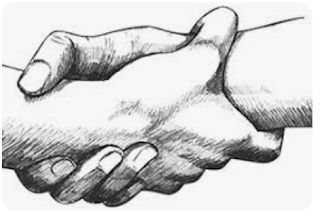Healing from a toxic relationship is a deeply personal and transformative journey that requires time, self-compassion, and intentional effort.
Toxic relationships—marked by manipulation, emotional abuse, control, or neglect—can leave deep psychological wounds that affect one’s self-worth, trust, and emotional well-being.
Walking the path toward healing involves several key steps: recognizing the toxicity, committing to self-care, seeking support, processing emotions, rebuilding identity, and cultivating forgiveness.
Step 1. Recognizing the Toxicity
as a defense mechanism, but true healing begins when a person recognizes that their relationship was harmful. This means confronting uncomfortable truths—perhaps that love was used as a tool for control or that one’s boundaries were repeatedly violated. Accepting this reality is essential, not to dwell on the pain, but to understand what one is healing from.
2. Committing to Self-Care
Toxic relationships often drain emotional, mental, and even physical energy. Once free from the relationship, one must prioritize self-care as a way to restore balance. This includes adequate rest, healthy eating, regular exercise, and engaging in activities that bring joy and peace. Mindfulness practices like meditation, journaling, and deep breathing can help ground a person and reconnect them to their inner self.
3. Seeking Support
4. Processing Emotions
Emotions such as anger, sadness, guilt, shame, and confusion are normal after a toxic relationship. It is important not to suppress these feelings but to face them with honesty and patience. Emotional healing requires feeling the pain, understanding its roots, and releasing it in healthy ways. This might involve crying, writing, talking, or using creative outlets like art or music to express what cannot be spoken.
Toxic relationships can distort
one’s sense of self. A vital part of healing is rediscovering personal
identity—values, passions, strengths, and dreams. This might involve setting
new goals, trying new hobbies, or simply relearning to enjoy one’s own company.
Reclaiming autonomy and self-worth restores confidence and sets the stage for
healthier future relationships.
6. Cultivating Forgiveness
Forgiveness in the context of healing is often misunderstood. It does not mean excusing the harm done or reconciling with the abuser. Instead, it is about releasing resentment and freeing oneself from the emotional grip of the past. Forgiving oneself is just as crucial—many survivors blame themselves for staying too long or missing the signs. True healing involves compassion toward oneself and choosing not to let the past dictate the future.
The journey of healing from a
toxic relationship is not linear—it involves setbacks, breakthroughs, and
constant learning. It is a sacred path of rediscovery, resilience, and rebirth.
With patience, support, and intentional steps, it is possible not just to
recover, but to grow stronger, wiser, and more attuned to one’s worth. Healing
is not just about leaving the pain behind; it’s about walking forward with
purpose, toward a life rooted in love, respect, and peace.












No comments:
Post a Comment